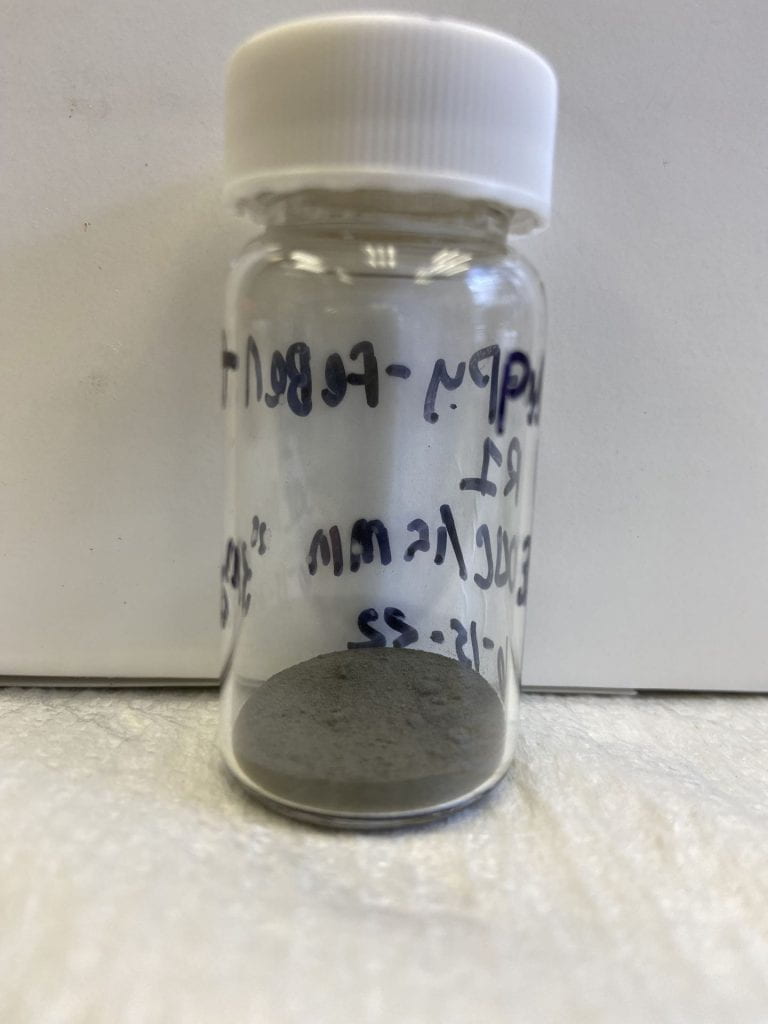Hello RETs can you believe we are wrapping up week 4? Time really flies by and I know we’ve all been hustling in our labs. Here are a few updates I want to share with you all:
Week 3
We collected and paralyzed all of our iron samples (6). From left to right you see: Iron Bentonite & Pyrolyzed Iron Bentonite; Pyrene Iron Bentonite & Pyrolyzed Pyrene Iron Bentonite; Hexacosane Iron Bentonite & Pyrolyzed Hexacosane Iron Bentonite.

Samples were contaminated at a 0.1% concentration (1000mg/kg)
We collected and paralyzed all of our copper samples (7). From left to right you see: Copper Bentonite & Pyrolyzed Copper Bentonite; Pyrene Copper Bentonite & Pyrolyzed Pyrene Copper Bentonite (2); Hexacosane Copper Bentonite & Pyrolyzed Hexacosane Copper Bentonite. Our pyrene copper bentonite copper sample had to be done twice due to the temperature increase on the first round.

Samples were contaminated at a 0.1% concentration (1000mg/kg)
Week 4
We pyrolyzed a 2.5% contaminated pyrene bentonite sample which produced a light gray color when compared to those impregnated with iron and copper. Iron has the darkest “char” colored feature which indicates that iron catalyzed the formation of char at a lower temperature.

2.5% Pyrene Bentonite 
0.1% Iron Pyrene Bentonite* 
0.1% Cupper Pyrene Bentonite* 
2.5% Pyrene Bentonite*
Extractions of the the pyrene bentonite and pyrolyzed pyrene bentonite samples were then performed using a 2:1 ratio of sample to DA (drying agent). Acetone was the only solvent used for these extractions.

Extracted Pyrene Bentonite 
Extracted Pyrolyzed Pyrene Bentonite
This color change may be indicative that pyrene is breaking down into other molecular fragments and/or forming byproducts that are abundantly present and visible via the GCMS. The question is why exactly our extractions changing color and what is synthesizing or breaking via the pyrolysis of pyrene in bentonite?
LEONEL
RESENDIZ

Very interesting lab and I believe your sample must having Cu Isotopes. I need to check with my mentor if we can use your samples after we done our research in more depth. May be last couple days of our program.
Hi Leo,
I know our research is very similar. I’m curious…was the extracted Pyrene Bentonite only done by pouring acetone over the soil sample and allowing gravity to extract the pyrene or did you heat the sample at all? I am interested to know why the color change occurred between the two samples. Let me know what you find out.
No. We use the ASE (accelerated solvent extractor) which involves mixing our samples with a drying agent and then heating them up and using hexane/acetone as a solvent. We also have tried extracting it manually by adding solvent directly to our samples, centrifuging it and then using a needle and syringe and micro filter to extract our sample.